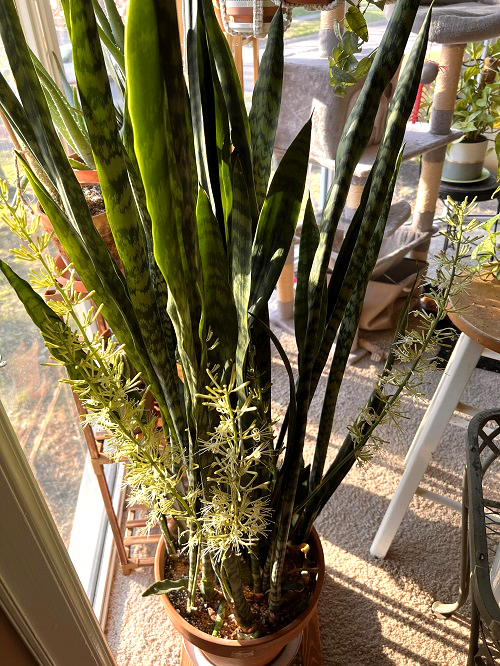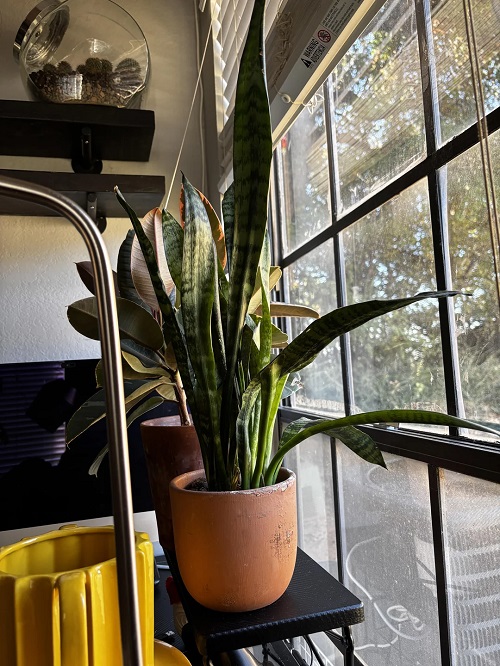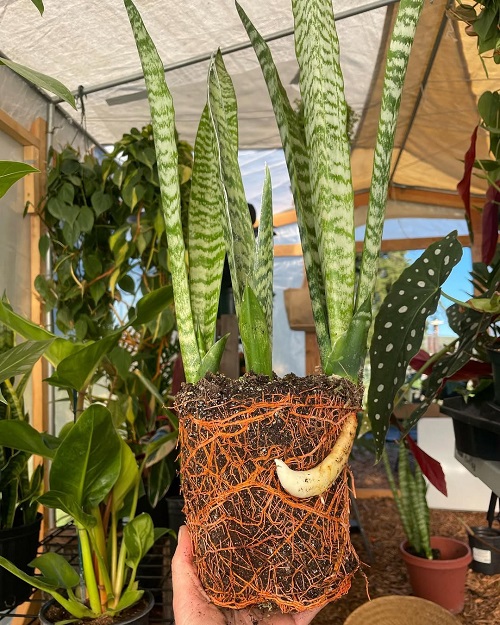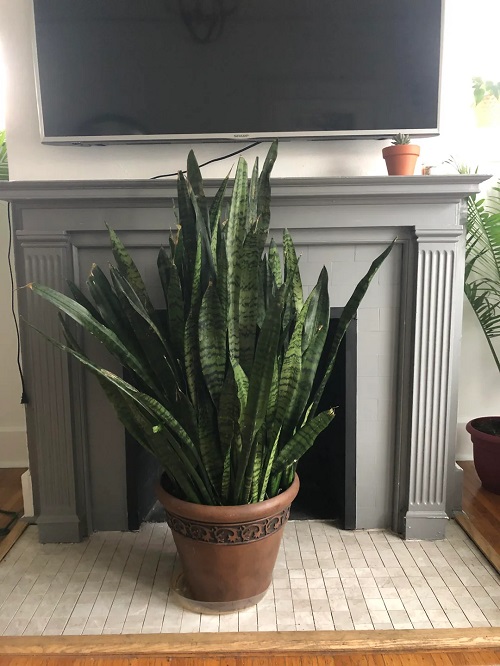If your Sansevieria isn’t blooming even after all the care, check out these Ways to Encourage Snake Plants to Flower!

While they’re primarily grown for their foliage, Snake Plants (Sansevieria trifasciata) can surprise you with delicate, fragrant flowers under the right conditions. If you’ve always wanted to see these for yourself, here are three effective ways to encourage flowering.
Best Ways to Encourage Snake Plants to Flower
1. Provide Sufficient Daylight

Light is key to helping any plant bloom, and of course, this includes snake plants. If you want yours to flower, try placing your plant near a south or west window that receives filtered daylight, or try an east-facing window! If you have a shaded porch or balcony, this can be the perfect spot too to get a blooming Mother-in-law’s tongue plant.
You may think my plant is doing well in low light, but the truth is, it’s just getting by. Although snake plants can survive in low light, they grow much slower and are less likely to produce flowers in such conditions.
The key is 8-12 hours of bright, indirect light each day. A simple way to ensure harsh light doesn’t fall directly on the plant is to filter out the sun using sheer curtains and screens.
An easy way to ensure your plant gets enough light is to use a light meter and check the amount. They’re cheap and readily available in utility stores and even online.
Note: Whatever happens, never place your snake plant in direct sunlight, especially in the afternoon, as it can scorch the leaves.
2. Keep the Plant Slightly Root-Bound

Snake plants tend to flower when they’re slightly root-bound. This means their roots should be snug in the pot, with limited space to spread out. Why, you may ask?
A root-bound snake plant is more likely to flower because being tightly packed in a pot with limited space is a little stressful. We want this stress because it triggers a survival mechanism, which produces flowers as a way to reproduce before potential decline.
Basically, it’s a response to an environment that is not ideal for further vegetative growth, prompting it to focus on flowering instead. Just let it grow in its pot and repot only after you notice the roots circling the top of the soil or coming out of drainage holes.
3. Maintain Warmth

Snake plants flower more readily in their natural habitat and open spaces. Outdoors experience more significant seasonal changes in light and temperature, which can trigger flowering. Indoors, these changes are minimized, but you can easily fix this.
Snake plants are native to warm climates, so it’s key to maintain an ideal range of 70-90 F (21-32 C) and never let the temperature go down below 50 F (10 C) and 100 F (38 C). Also, avoid exposing the plant to sudden temperature changes or cold drafts.
During winter months, keep your snake plant in a protected, warm spot, away from windows that may let in cold air. Focus on keeping your snake plant in a comfortable range for its health, which will lead to flowers.
Bonus: Stress Technique to Encourage Snake Plant Flowers
Induce controlled stress! Yes, you heard that right. Notice how the stress of being root-bound encourages a snake plant to flower? Well, what if you could induce more such stress in a controlled way?
Plants focus on two goals—staying alive and making more of themselves. If one of these senses any danger or stress that might threaten its survival, it shifts energy toward reproducing to ensure that its species survives.
To mildly stress a snake plant and encourage pups and blooms, you can slightly under-water it by allowing the soil to dry out almost completely between watering spells; doing so will mimic a drier environment, which can also trigger blooming. Remember, watering less frequently doesn’t mean you should not saturate the soil deeply every time you water.
Note: Be careful not to over-stress the plant when you do this by letting it become severely dehydrated. Give it less water, but don’t parch it.
Snake plants will usually bloom once a year, usually around Spring or Summer. So if it’s already done it once, don’t put in extra effort trying again until next year. Also, some varieties, like Sansevieria trifasciata ‘Hahnii Honey Bunny,’ rarely bloom, so go with these blooming varieties!


